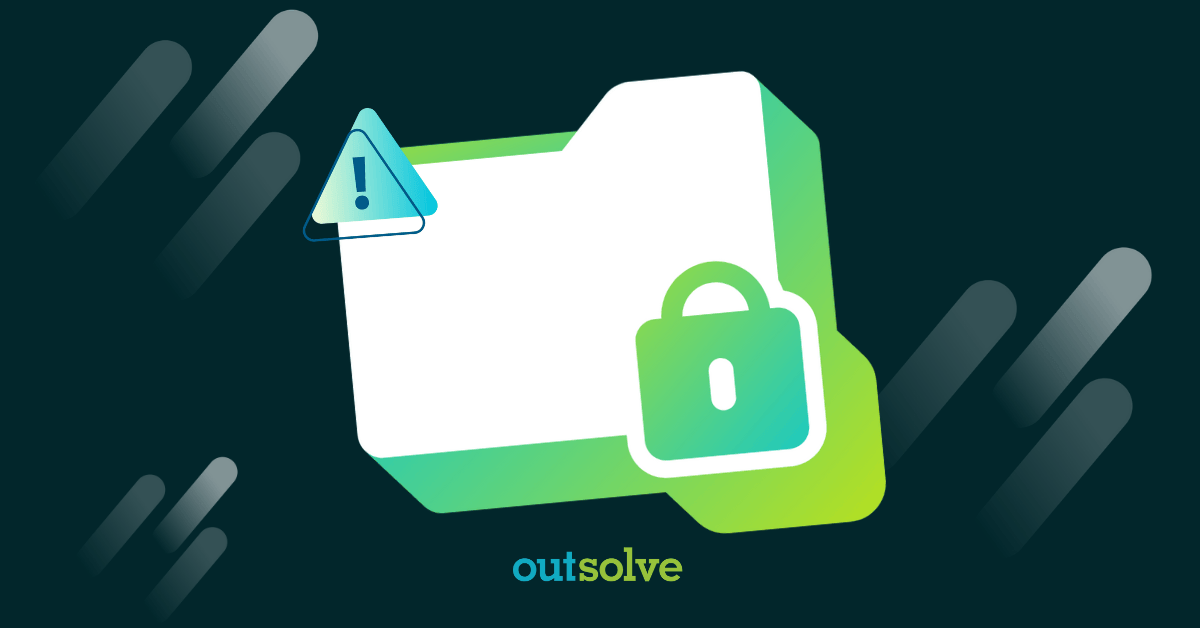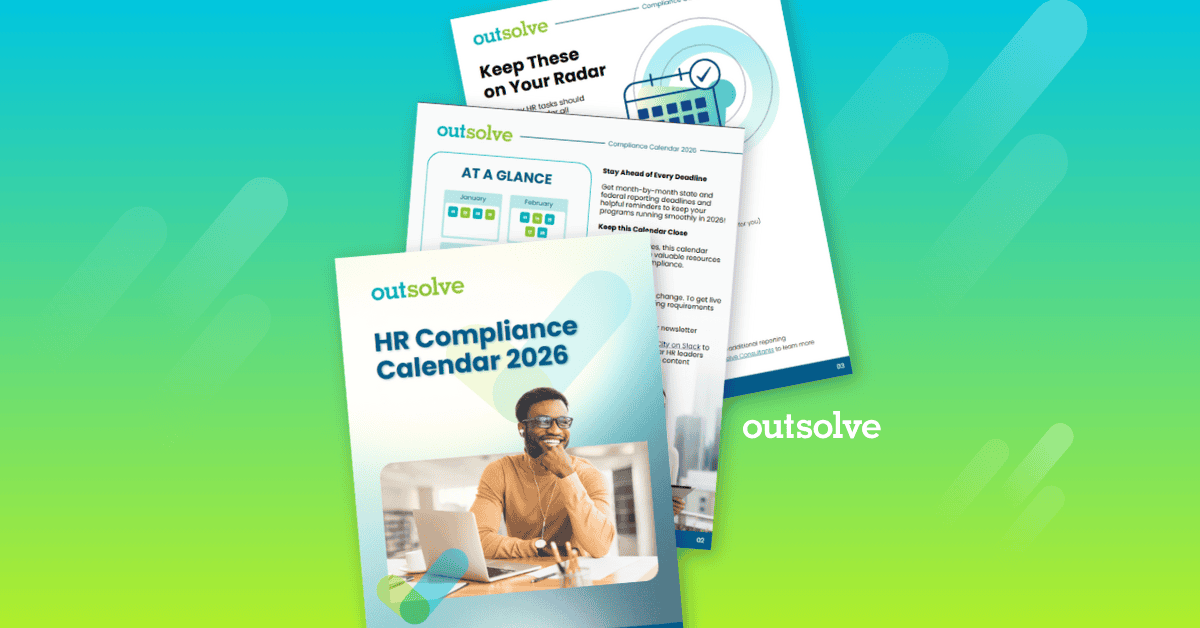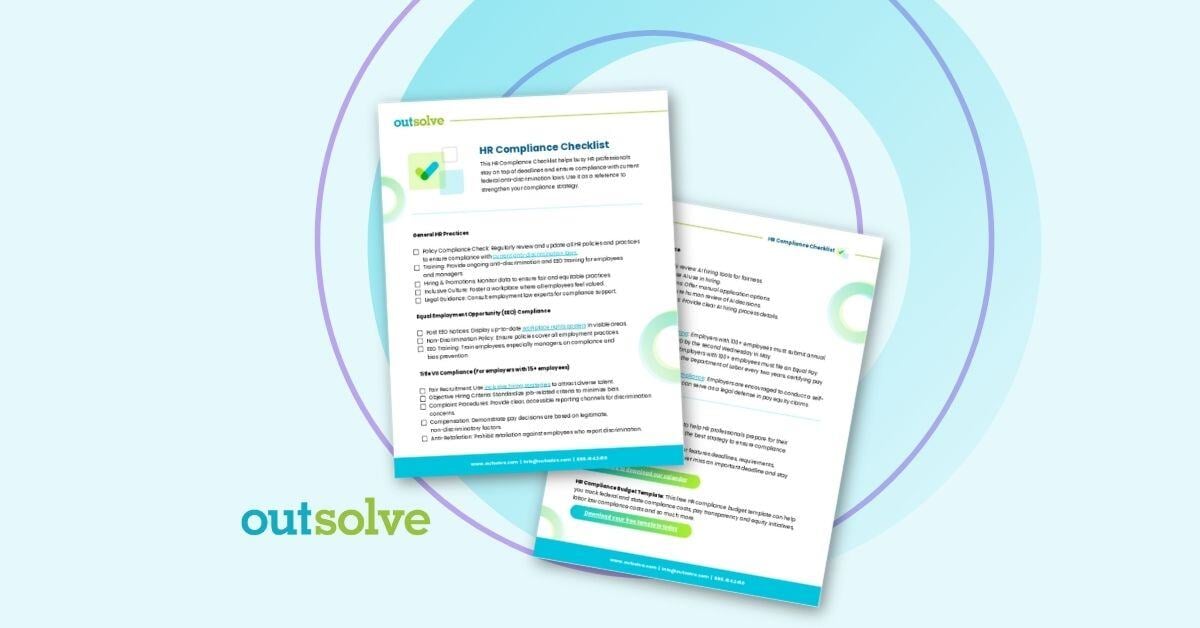3 min read
Automate or Audit: Why Manual I-9 Compliance Is No Longer Safe
![]() OutSolve
:
Sep 22, 2025 12:29:10 PM
OutSolve
:
Sep 22, 2025 12:29:10 PM

Welcome to Part 3 of our 3-part series, I-9 Compliance Trends: Enforcement Risks and Best Practices. As Part 1 revealed the heightened regulatory risks and Part 2 outlined the strategic role of executive leadership, this final installment focuses on the solution: automation technology.
ICE audits are back in full force, and companies that still rely on paper files or spreadsheets are exposing themselves to costly fines and unnecessary risk. Automation isn’t just a convenience; it’s a compliance safeguard. In this post, we explore how automated I-9 management systems help HR teams reduce errors, track re-verification deadlines, and build defensible audit trails. The organizations that invest in smart I-9 technology now will be the ones who sleep soundly later.
Automating I-9 Compliance is Imperative
The recently intensified ICE enforcement activity has made manual I-9 processes not just inefficient but potentially risky from a compliance perspective. Organizations that continue to rely on paper-based systems or basic electronic storage find themselves at a significant disadvantage when faced with an audit.
The value of automating I-9 processes can't be overstated in today's enforcement environment. Manual processes are naturally prone to errors, inconsistencies, and omissions that can result in significant penalties resulting from an ICE audit. Automated systems can help ensure forms are completed correctly, documents are properly verified, and retention requirements are met.
The benefits of automated I-9 management systems go far beyond error reduction. These systems provide real-time visibility into compliance status. This, in turn, enables HR departments to identify and address issues before they become serious problems. Additionally, dashboard reporting capabilities allow managers to track completion metrics, identify potential non-compliant records, and ensure all employees have proper documentation on file.
Automated systems also excel at managing the complex timing requirements associated with I-9 compliance. The law requires that I-9 forms be completed within specific timeframes, and failure to meet these deadlines can result in penalties even if the underlying documentation is proper. Automated systems can track these deadlines and provide alerts when action is required, ensuring that no employee verification falls through the cracks.
The re-verification process, in particular, benefits significantly from automation. Tracking work authorization expiration dates for what could be hundreds of employees is complex and is prone to human error when handled manually. Automated systems can track these dates, generate alerts well in advance of expiration, and guide HR personnel through the re-verification process.
Document management capabilities are another critical feature of modern I-9 systems. These systems can store electronic copies of supporting documents, track document retention periods, and ensure that records are preserved for the required timeframes. This capability is particularly valuable during ICE audits, when organizations must provide access to all employees’ I-9s and other documents supporting work eligibility. And while ICE’s Audit protocol can be both complicated and arduous, the first two steps are straightforward:
Step 1: Notice of Inspection (NOI)
- ICE serves the employer with a formal Notice of Inspection
- Employer gets at least 3 business days to produce all requested I-9 forms
- ICE also requests supporting documents like payroll records, employee lists, business licenses, and articles of incorporation
Step 2: Homeland security Investigation/Inspection
- ICE agents and auditors examine all submitted I-9 forms for compliance
- They look for both technical errors (paperwork mistakes) and substantive violations (more serious compliance failures)
The audit trail capabilities of automated systems provide crucial protection during ICE inspections. These systems can demonstrate exactly when each form was completed, who completed it, what documents were reviewed, and what changes were made over time. This level of documentation can be invaluable in demonstrating good faith compliance efforts and may help reduce penalties in cases where technical violations are identified.
Integration with existing HR systems multiplies the value of automated I-9 management. When I-9 data is connected to an organization's HRIS, they can more easily identify discrepancies and ensure consistency across all employee records. This integration also reduces the administrative burden on HR personnel by eliminating duplicate data entry and automatically starting the Form I-9 process.
The reporting and analytics capabilities of automated systems provide insights that are impossible to obtain from manual processes. These systems can identify patterns of non-compliance, track performance metrics, and generate reports that help demonstrate compliance efforts to auditors. This data-driven approach to compliance management enables organizations to continuously improve their processes and reduce their risk exposure.
Perhaps most importantly, automated systems enable organizations to scale their compliance efforts as they grow. Manual I-9 processes become increasingly unwieldy as organizations add employees, but automated systems can handle thousands of employees with the same level of accuracy and efficiency. This scalability is particularly important for rapidly growing organizations, remote hiring, or high-volume hiring organizations that might otherwise struggle to maintain compliance as they expand.
Conclusion
ICE isn’t slowing down, and neither should your compliance strategy. As we've seen, manual processes simply can’t keep pace with today’s enforcement environment. Automation not only reduces the risk of technical violations but also empowers HR teams to proactively manage I-9 responsibilities, scale with organizational growth, and stay ahead of audits.
From built-in alerts and digital signatures to integration with your HRIS and real-time compliance dashboards, the benefits of automation are clear.
The question is no longer “Should we automate?”—it’s “Can we afford not to?”
Now is the time to invest in a solution that transforms I-9 compliance from a liability into a strength.
Download the full research report, “I-9 Compliance Trends: Enforcement Risks and Best Practices,” for a comprehensive look at the data, trends, and strategies shaping the future of employment eligibility compliance.
Related Articles
- Part 1: I-9 Enforcement Reignited: ICE Cracks Down in 2025
- Part 2: Executive Leadership: The New Front Line in I-9 Compliance
Founded in 1998, OutSolve has evolved into a premier compliance-driven HR advisory firm, leveraging deep expertise to simplify complex regulatory landscapes for businesses of all sizes. With a comprehensive suite of solutions encompassing HR compliance, workforce analytics, and risk mitigation consulting, OutSolve empowers organizations to navigate the intricate world of employment regulations with confidence.
Weekly OutLook
Featured Posts

New Year, New Deadlines: 2026 HR Compliance Calendar

outRageous HR: Plan Now or Pay Later
Related Posts

Refreshing Your I-9 Tools and Process to Stay Compliant
Form I-9 is a federal requirement that carries real consequences if handled improperly. With increased scrutiny on immigration by the current...
.png)
New Year, New Risk: Why Federal Contractors Can’t Hit Snooze
Lean in to disciplined, data‑driven compliance

An HR Year in Review: Key Updates in 2025
The unpredictability of 2025 has been an uphill trek for HR teams across the U.S. This year brought substantive employment compliance changes to...


